How To Pack for Hunting Trips in 3 Simple Steps
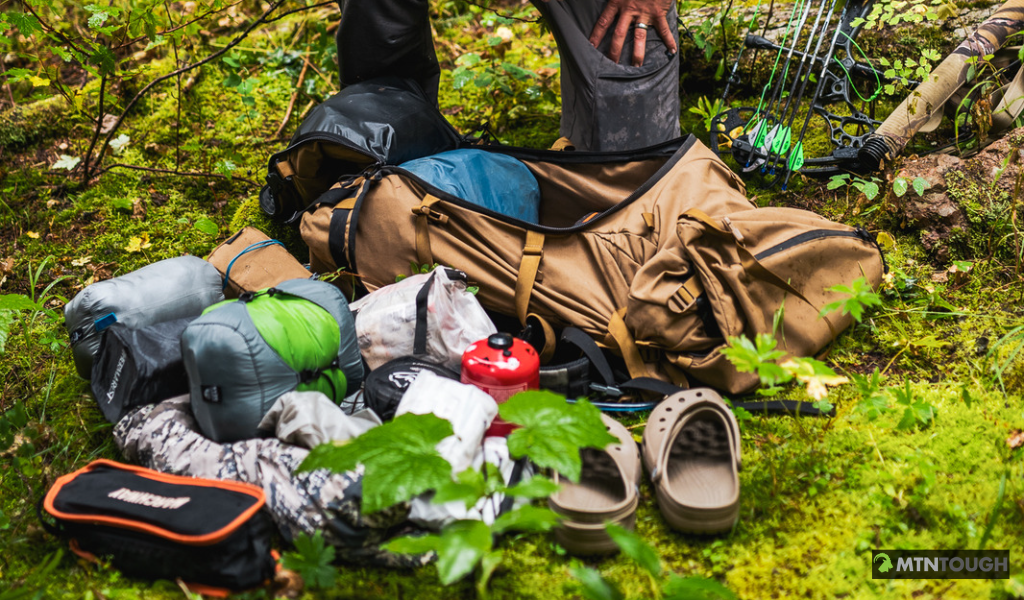
It's well-known that backcountry hunting is reserved for the toughest individuals. But for the uninitiated, it's lesser known how frustrating packing for the backcountry can be. First-time mountain hunters face the fear of not packing enough, whereas the tried and true hunters concern themselves with cutting ounces and increasing capacity. This back-and-forth is a buzzkill for what's soon to be an amazing experience.
That's why we've partnered with our friend Lyle from Stone Glacier, to create this simple step-by-step guide to packing for your next hunting trip. Stone Glacier's been making ultralight packs and gear for backpack hunting since 2012 - so they know a thing or two about how to pack for a successful hunt.
A properly packed backpack isn't just about getting the biggest bag available and stuffing all your gear in it. It's a balance between having all your essentials in one place and being able to find anything quickly when you need it. A well-stocked and organized pack is the unsung hero of any successful hunt. No one wants to rifle through a chaotic mess that causes discomfort, a strained back, or a failed hunt.
With the help of Lyle, we've rifled through all the different ways to simplify the packing process and netted out with a simple 3-step formula, it looks like this:
- Assess Needs: Using 4 conditions of your hunting trip, separate essentials from nice-to-have items.
- Determine Pack Size: Pair your essentials and needs to pack size, accounting for capacity and weight.
- Organize Efficiently: Create a logical system that keeps you one motion away from the essentials in your pack.
Simple by design, these three steps take the tough decisions out of your hands and power you through the packing stage without missing anything along the way. We're spilling the secrets of choosing the perfect gear for the outing and some packing hacks to maximize your efficiency and effectiveness - so keep reading.
1. Assessing Your Needs
The first step is always the toughest, but usually the most important. And in this guide, the first step certainly doesn't disappoint. Reframe this stage as the planning stage, where taking the time to properly prepare will save you time, frustration, and disappointment in the long run. Like any experienced carpenter will tell you, measure twice and cut once. This stage begins by defining the four influences on what you should carry.
4 Factors That Influence What You Pack for Backcountry Hunting
- Game: What are you hunting? Bears? Wolves? Elk?
- Terrain: Understanding the habitat and the elevation based on seasonality.
- Weather: General climate of habitat, temperature fluctuations, seasonality, and altitude.
- Duration: How many days will you be out?
While each factor above has a distinct impact on what you should haul, the idea here is to look at the sum of all the parts - not the parts in isolation. Think of it this way - hunting spring bears in Montana requires a different system than Colorado bears in September.
Once you define these 4 factors, it's time to categorize your gear.
Categorizing Gear for a Hunting Pack
This part of assessing your needs starts with a list. Grab some paper and write out everything you think you'll need to bring with you. Look through your gear if you need some inspiration.
This takes some work and a heavy dose of patience, but that's why this is the toughest stage. After you have a robust list down, go through and categorize essentials, extras, and unnecessary items.
- Essentials are the bare minimum you need to survive and enjoy your hunt in comfort. This includes gear like a kill kit, first aid kits, nav tools, food, etc.
- Extras are items that can make the trip more enjoyable by giving you an edge in the field. These would include things such as more socks than you need, carrying too much water, additional pouches for storage, etc.
- Unnecessary items neither aid the hunt nor help as an essential need. They purely sit in the nice-to-have category, and shouldn't make the trip.
Following this approach will make sure all the important items get packed while also preventing you from lugging around unnecessary weight.
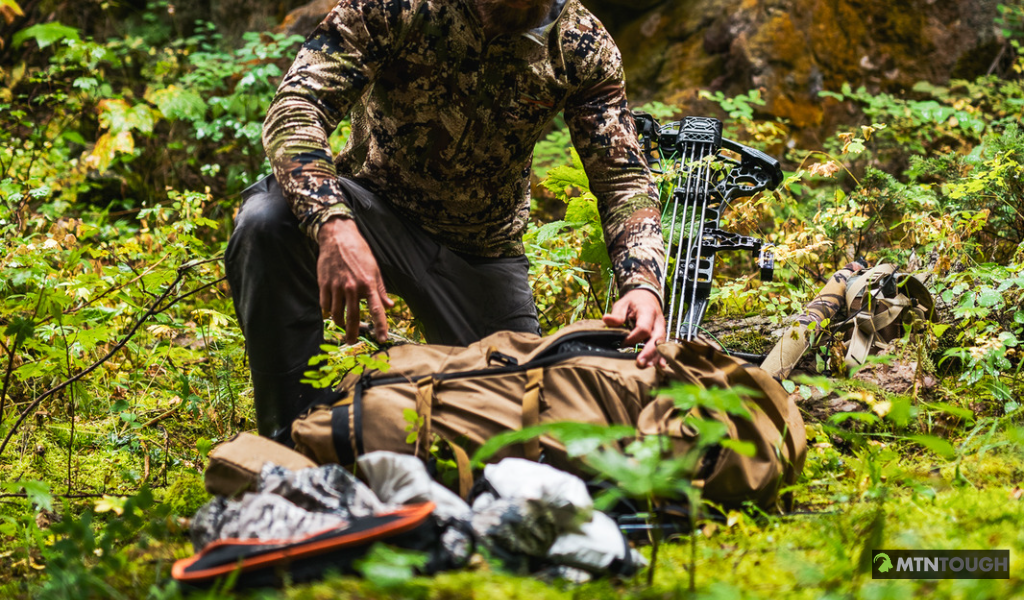
Essential Items to Pack
What's essential for one person may not necessarily be for another - Lyle says it best - "There is no one-size-fits-all system for backpack hunting." This is emphatically true, but there is still a short list of essentials that make every trip because they keep us safe, comfortable, and primed for success. So, customize your essentials to fit your preferences and the context of your hunt, but be sure to include at least the following:
- The Right Apparel: Pick weather-appropriate clothing, like moisture-wicking base layers, insulating mid-layers, and a waterproof outer shell. Layering up allows you to adapt to fluctuating temperatures and conditions with ease.
- Food and Water: Keep hydration and nutrition at the top of your packing list. Bring along a dependable water purification system, such as a portable filter or purification tablets. For sustenance, choose high-energy, non-perishable grub, like seeds, jerky, and energy bars to keep your engine running during those action-packed days in the field.
- Medical and Hygiene: Your first-aid kit needs to include more than a couple of aspirin and Flintstones band-aid. Invest in a proper readiness kit, failure to do so is a big miss. Roughing it doesn't mean neglecting yourself either, so if you have medication be sure to grab that, and whatever basic toiletries you need. Being prepared for the unexpected is always a smart move, so give these essentials the attention they deserve.
- Hunting Gear: Of course, we can't forget the star of the show – your hunting gear. This includes your weapon of choice, ammunition, optics, and all necessary permits or licenses. Much of this should be in your kill kit. Invest in a sturdy way to haul your firearm or bow, like the bow attachment on Stone Glacier's packs. as well as a comfortable, secure method for toting your ammunition.
- Miscellaneous: Round out your packing list with some important miscellaneous items such as GPS, map, compass, quality headlamp, or flashlight. These tools can be game-changers in a survival situation but also improve your ability to navigate more benign backcountry challenges.
How to Make the Tough Calls
When it comes to gear, less is often more. Separating essential items from the rest is an exercise to help you ditch the fancy gadgets that'll just add dead weight and clutter to your backpack. It promotes focusing on the essentials that contribute to your hunting prowess and comfort in the wild.
But there are other ways to help you bring the right gear, and some of them may even add more functionality to your extended hunt.
Light, Compact, and Multi-Purpose
Gear up smartly by choosing lightweight, compact equipment that won't weigh you down. This not only streamlines your packing process but also gives you the freedom to navigate rough terrain with ease.
The logic is simple, Lyle states, "If you invest in an ultralight bag, stuffing a bunch of heavy and bulky gear into the pack will defeat the purpose of the lightweight pack."
Choosing lighter and smaller gear isn't the only way to cut weight. If you have items that duplicate roles, that's an easy way to lose pounds. An easy example of this is a multi-tool that could replace several other items and take up less space. If you go this route, where you invest in highly versatile items, be sure to go with high-quality options. This is a truth for anything you carry in the backcountry, and most certainly your pack. Choosing cheap products that won't last can impact your access to several items you'll need, not just one. You'll save space and have room for other crucial items.
Stone Glacier's gear and packs are synonymous with light, compact, and multi-purpose. Look no further than the ultralight frames that can weigh in under 3 lbs yet still carry 150+ lbs. Their packs are shape shifters too, giving you the right capacity to get your gear to camp and then compress down to reduce your profile while hunting. It's a day pack and a multi-day pack in one, light enough to move in stealth mode, but sturdy enough to pack out a hindquarter and cape/head without having to head back to camp for a frame. That's multi-purpose at its finest.

Destination Details
Do your homework before heading out – research your hunting destination and factor in terrain, weather, and local regulations when picking your gear. This should be covered in depth as you prep for your trip, as it's baked into the very first step of this entire process. But what's different here is checking for any updates as the date gets closer.
This way, you'll be ready to tackle whatever challenges your chosen hunting spot throws at you, be it dense forests, rocky inclines, or high altitudes. With rapid weather changes and record highs and lows, knowing where you're headed can completely alter what you need to carry with you. Be sure to know the details of where you're going - it could save you from wasting energy.
Learn How to Layer
Reduce the amount of clothing you'll need just by simply understanding how to properly layer. It starts with buying premium and lightweight threads that work in a system to adapt to temperature changes.
You want to find breathable and moisture-wicking fabrics to keep up with the physical demands. Multi-directional stretch is also a solid feature to keep the durability of apparel intact. At the risk of oversimplification, your layering system should look something like this:
- Base Layer: Touches your skin and its purpose is to wick moisture away from your body, pulling it into and through the layer.
- Mid-Layer: Primarily insulates temperature, but the fabric should be breathable and also moisture-wicking.
- Outer Layer (Shell): Your outer layer is your shell, and shells come in several ratings, but in general, they should have some layer of resistance to wind and rain, while also helping push moisture out and preventing moisture from coming in.
If you can build a change of clothes around this system, barring ridiculous fluctuations, you can pack lighter and cover a wide range of temperatures and conditions with less.
Once you complete your essentials, shift your focus to extras and keep them separate from the must-haves.
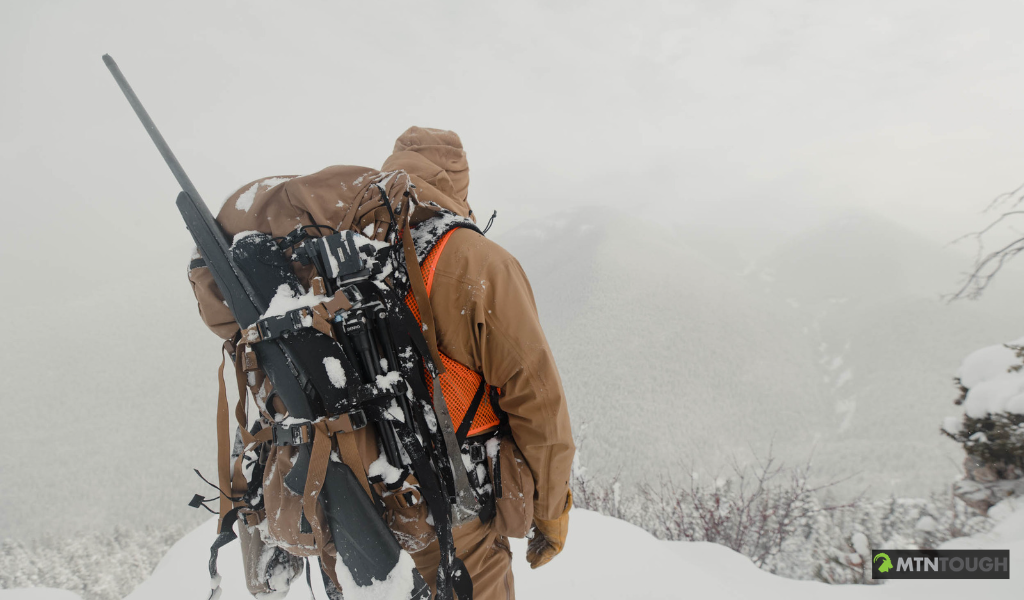
2. Determine Pack Size
You'll need to tally up the weight and cubic inches of your essentials at this point. You should have two piles of gear, where essential items are non-negotiable and extra items are on the chopping block.
Duration and Time Weight
In addition to the must-haves, the length of your trip impacts what you bring. If you're only going for a short time, you won't need as much food or supplies as you would if you're planning a longer expedition. And as you deplete resources, you'll want to account for the impact that has on weight as well.
This is referred to as time weight, where consuming resources lightens the load over time. The odd part of hunting though is if you're successful, you'll end the trip with far more weight than you started with.
Again, every trip into the backcountry is unique so there isn't always one way to determine the pack size needed for a hunting trip. How could they be when so many factors alter the gear you need? That said, the guys at Stone Glacier tend to see pack capacity align with trip length in the following ways:
- Day Hunts: 2800-3200 cubic inches
- 2-5 Days: 3600-5900 cubic inches
- 7+ Days: 6400+ cubic inches
Add some tolerance here as you customize pack size to your 4 factors - where Lyle will be the f. If you're unsure what a target should be you can always use the general approach of maxing pack weight at 20% of your body weight.
How Much Should a 5-Day Hunt Pack Weigh?
A pack for 5 days of hunting should ideally weigh around 4 lbs unpacked, including an ultralight frame and bag. Packed, a 5-day pack to set camp would typically weigh between 35-45 lbs to account for shelter, food, water, gear, etc. Distributing weight evenly ensures comfort and energy efficiency.
While this number varies depending on several factors - such as the type of hunting, season, destination, the hunter's body, the frame of their bag, etc, with a standard 1000 cubic inches assigned per day of a hunting trip and a baseline of 1000 cubic inches, a hunter would need a pack that can handle 6000 cubic inches, or close to 96 liters. This is a general approach to how some hunters estimate the capacity needed for hunting, solely based on duration. Whether you follow this method or use Stone Glacier's general guideline for capacity, 5 days will put you closer to a pack of 6000 cubic inches.
There's high tolerance in this approach, but a pack this size could handle heavy weight and certainly cover a person at 200-250 lbs, where 20% of their body weight makes up the total pack weight.
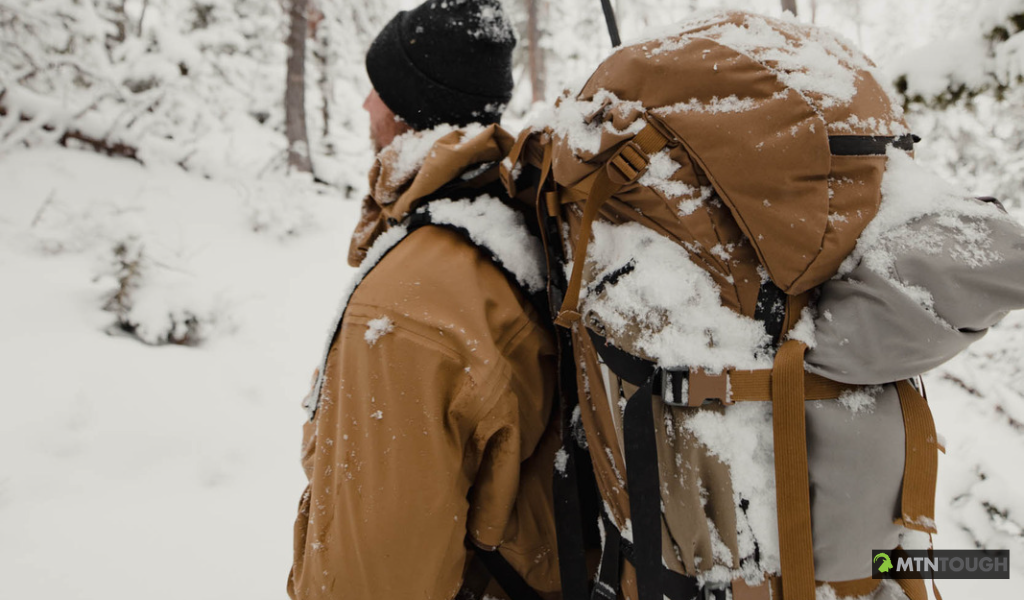
How Big of a Pack Do I Need for a 7-Day Hunt?
For a 7-day hunt, a multi-day pack of 6400 cubic inches is recommended. This capacity provides ample space for clothing, shelter, food, and hunting gear while maintaining a manageable weight for challenging backcountry terrain.
3 days or 7 days, the goal of packing for any length of hunting trip remains the same - cover the essentials without sacrificing mobility as much as possible.
What Should I Pack in My Hunting Day Pack?
A hunting day pack should include necessities such as hydration supplies, food, emergency equipment, hunting essentials, and navigation aids. Ideal for scouting, carrying these items helps guarantee a successful, safe, and enjoyable hunting trip in any backcountry terrain.
Now that you've cut out the non-essential items and figured out how much weight your pack should be, and the items that fit this approach, it's time for the final step - packing your gear efficiently so that everything you needs is easily accessible.
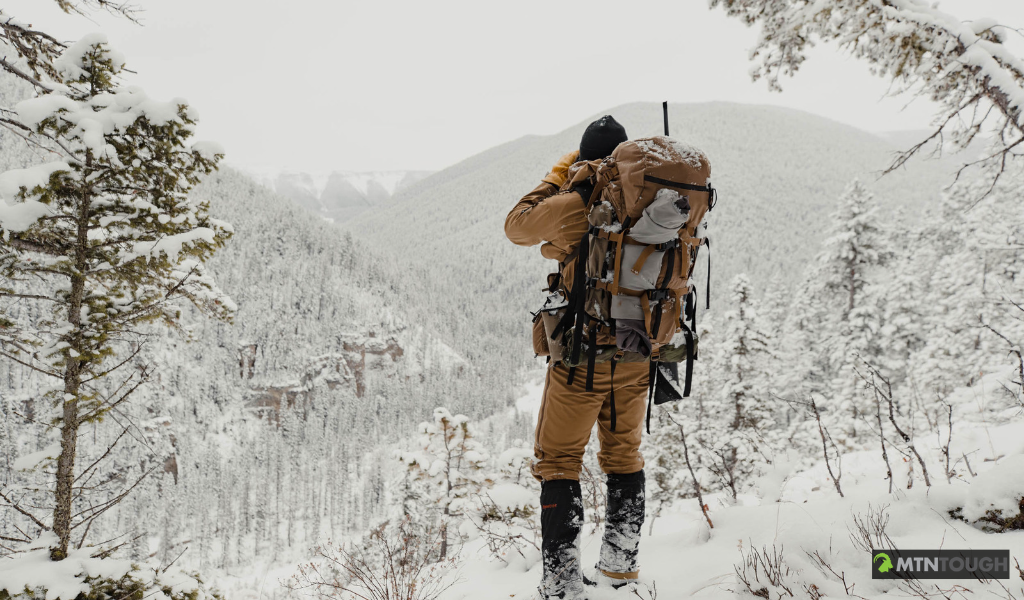
3. Efficient Packing Techniques
Think of this step as more like maximizing space and reducing frustration rather than frivolously organizing for the sake of organizing. This step will make everything compact and make sure whatever you need is within easy reach when it matters most.
How Do I Maximize Space in My Hunting Pack?
Maximize space in your hunting pack by rolling layers, compressing items, folding items into themselves (such as hoods), and filling empty spaces with smaller items. Rolling clothes is more space efficient than folding as it allows you to pack apparel more tightly.
To amp up the organization and space, use compression sacks - Lyle, like most seasoned hunters, will testify to their usefulness, "Ultralight compression sacks are essential for reducing the size of your sleeping bag, down layers, and even your tent body and fly. Compression sacks will also provide an added layer of protection from water. Ultralight nylon bags are another great way to maximize organization. The more you can compartmentalize your gear, the easier it will be to pack, the more space you’ll save, and the quicker you’ll be able to access gear when you need it."
Make every inch count by filling empty spaces with smaller items like socks or gloves. This trick not only maximizes your pack's potential but also adds extra padding if needed. Be on the lookout for soft casings and packaging - although seemingly small, these can culminate in wasted space throughout a pack system. If the item requires some layer of protection, wrap it in a piece of apparel, like a sock.
How Do I Organize My Hunting Pack?
Organize your hunting pack by prioritizing accessibility, weight distribution, and compartmentalization. Place frequently used items in external pockets, balance heavy gear close to your spine, and group similar items in separate compartments for easy retrieval.
Accessibility is the goal of hunting pack organization. Lyle organizes his pack in the following way; "Keep essentials in places that are easy to access. Gear like rain shells, gloves, a spotting scope, and a tripod should all be easy to access. Burying these items deep in your bag will waste time and energy retrieving them, leave you susceptible to getting your gear wet, and potentially squander an opportunity to identify and close in on an animal."
Even gear that gets placed in your main compartments should be prioritized. More important items or those used more frequently should sit closer to the zipper. This way, you can spend less time rummaging through your pack and more time glassing for elk.
Daily Nutrition
Aside from the weather, one of the biggest factors that determine pack size (capacity and weight) is food. The nutrition needed to sustain your body over a week adds a significant amount of weight and requires far more space than a 3-day hunt.
Lyle's approach to packing food is a tried and true method of organizing, "There are some great resources online to help prepare your meals for backcountry nutrition. Once you’ve determined the food you will eat, pack each day’s food into its own Ziplock bag so you have an exact idea of how much space your food will take up."
By embracing these efficient packing techniques, you'll streamline your hunting experience and dodge potential hiccups. A well-organized pack not only improves your comfort and mobility in the backcountry but also sets you up for a successful hunt.
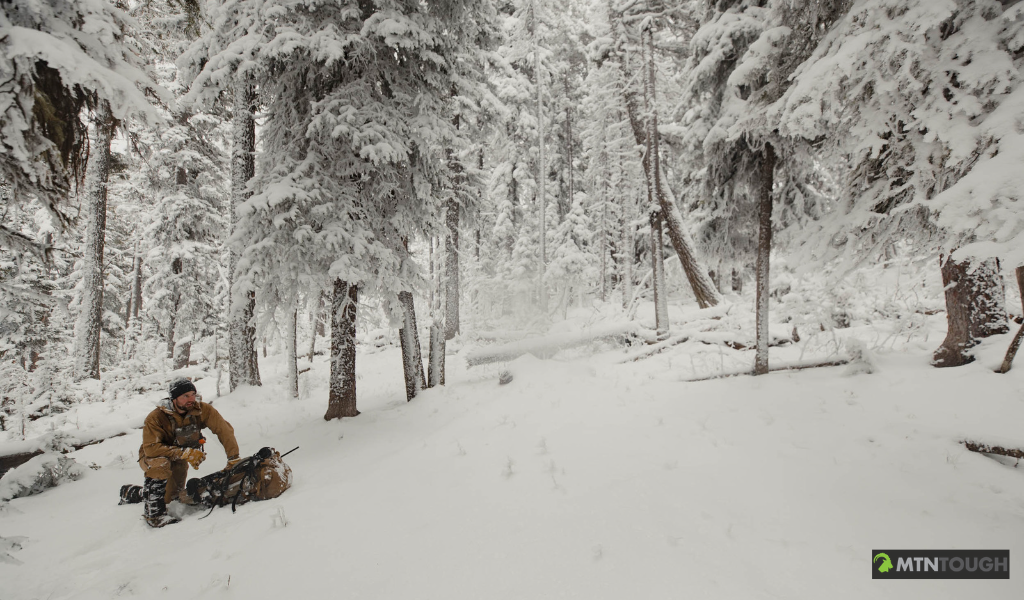
The Pecking Order of Packing
Your essential gear, the important and necessary items, should come first. Once they're all in, you can move to extra items. Just remember that each item you add is going to add to the overall weight of your pack, so be smart. "Ounces make pounds" as they say.
By assessing your needs, defining your target pack size, and implementing efficient packing techniques – you'll set yourself up for a successful and more enjoyable backpack hunting experience. Keep in mind that practice makes perfect, so continually refine your packing strategy as you gain more experience in the field. A debrief after any hunting trip is a great way to take stock of what worked and what needs improvement.
Assessing your needs by categorizing them by essentials, non-essential but helpful, and items that are neither essential nor helpful in improving your hunting performance can lead to a well-thought-out packing list and prevent an overburdened excursion. Even after culling the herd, you'll still need to make cuts to accommodate the right pack weight. Factors such as the duration of your hunting trip and your body weight play major roles here. Striking the right balance between pack weight and the gear you need will enable you to move efficiently and avoid fatigue. As a general rule of thumb, your pack should not exceed 20-25% of your body weight for multi-day trips.
Bringing it all together, the last part is finding the most efficient means of placing your gear inside your pack, such as rolling or filling dead space to maximize capacity. Organize your pack so that the heaviest items are close to your back and centered vertically, while frequently used items are easily accessible.
Remember, less is often more when it comes to backcountry hunting. If you can carefully evaluate your needs, set a realistic target capacity and weight, and employ efficient packing techniques, you can streamline your loadout and focus on what truly matters: enjoying the hunt and the great outdoors.
Co-Author: Lyle Hebel, Director of Marketing at Stone Glacier
Stone Glacier is constantly innovating packs for the backcountry hunter. As mountain hunters, Lyle and the entire Stone Glacier team understand the importance of balancing technical performance, weight, packability, and versatility that lasts a lifetime. They've been at it since 2012, when founder, Kurt Racicot, ran the first line of packs.
Their reputation and product lines have extended into technical apparel, ultralight shelters, sleeping systems, and other specialized gear, but one thing has remained the same - their dedication to purposeful innovation for backcountry hunters.






Leave a comment